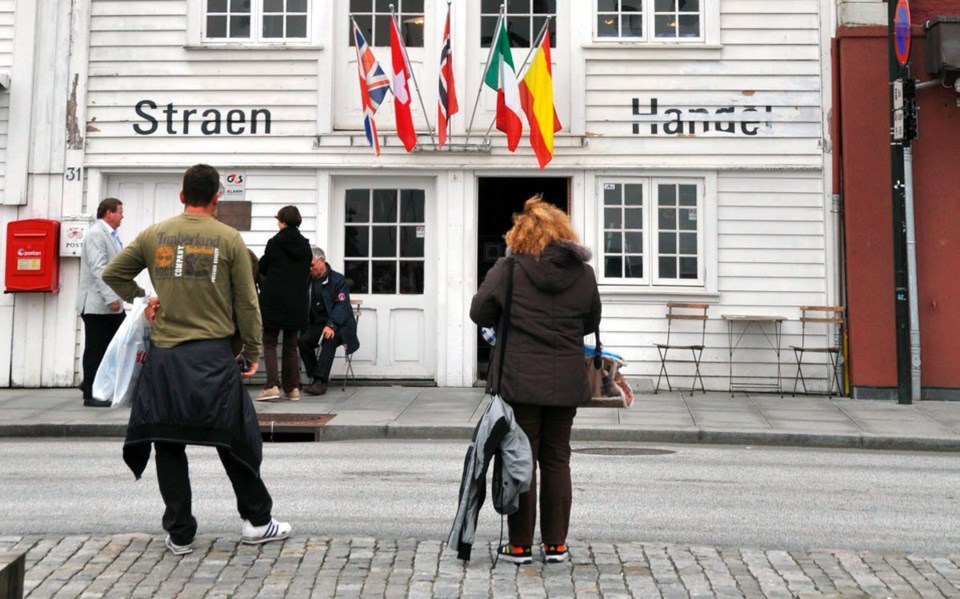When travelling to Europe, I sometimes crank up the voice of my grandmother telling stories of her journey from Norway to sa���ʴ�ý. The boat ride was miserable. The only thing she could keep down was beer — she became a teetotaler the day she saw the Statue of Liberty. Having entered North America like a bad traveller — not speaking the language, packing too much luggage and not enough money — she navigated the immigrants’ road to Edmonton, where she eventually met her Norwegian husband.
Today, I zoom across the same ocean that took her weeks to cross. I enjoy my glimpses of the Old World, while remembering that millions of Europeans left it behind forever in search of the New World. For those who want to take a closer look at this exodus, visit Europe’s emigration museums, which chronicle the flood of departures in the 19th and 20th centuries.
If you have Norwegian roots like I do, a trip to the southern Norway port of Stavanger should include the Norwegian Emigration Center (emigrationcenter.com). This fine facility is in an old warehouse near the wharf where the first boats sailed with emigrants to “Amerika” in 1825.
Its exhibits trace the story of the Norwegian diaspora — why they left, their journey, and what life was like in the New World. You’ll learn how the Norwegian population boom in the early- to mid-19th century led to a critical shortage of basic resources, forcing 677,000 Norwegians to leave during the steamship era (1865-1915).
At the museum’s study centre, the staff can help answer genealogy questions. You don’t need to be in Stavanger to use this service, but searching for your roots in the place where your ancestors took their last steps on Norwegian soil has a certain romantic appeal.
For Swedish North Americans, the House of Emigrants in Vaxjo — located in Sweden’s Glass Country — offers powerful insights into the lives of Swedes who sought refuge in North America in the late 19th and early 20th centuries (utvandrarnashus.se).
As economic woes wracked Sweden (even a potato famine hit at one point), the country was caught up in an “American Fever.” Nearly 1.3 million Swedes endured long voyages and culture shock to find prosperity and freedom in the “promised land.”
The museum’s life-size Snusgatan exhibit re-creates the main street in a Swedish-American neighbourhood. Other displays cover Swedish lifestyles, religion, women’s experiences, and prominent Swedish-Americans, including Charles Lindbergh, and the second man on the moon, Buzz Aldrin. Don’t miss the display about the Titanic, which takes pains to point out that — after Americans — Swedes were the second-largest group to perish on that ill-fated vessel. On view are a few items that went to the bottom of the Atlantic with one of those Swedes.
In Germany, Hamburg’s BallinStadt Emigration Museum depicts European emigration from the mid-19th century through the Second World War (ballinstadt.net). Especially after 1890, many emigrants from the Austro-Hungarian and Russian empires went first to Hamburg, by train or even on foot, before crossing the ocean. The museum is in dormitory buildings that once housed sick emigrants until they were healthy enough to leave.
Ireland offers two good choices. The Ulster American Folk Park near Omagh (about 110 kilometres west of Belfast) is a combination museum and folk park commemorating the many Scots-Irish who left their homeland, most settling in the southern United States (nmni.com).
In Cobh, near Cork on the island’s south coast, travellers can view exhibits on the potato famine, Irish emigration, and Australia-bound prison ships at the Cobh Heritage Centre (cobhheritage.com).
There’s even a statue of the first immigrant to arrive at Ellis Island. Those with Irish roots can use the Heritage Centre’s genealogy search (costs about $13 for 30 minutes of research assistance, email ahead [email protected]).
Belgium’s major port of Antwerp is putting the finishing touches on a new emigration museum that will open in September — the Red Star Line Museum (www.redstarline.org). Between 1873 and 1935, this shipping line brought some two million emigrants to New York — including Jews escaping eastern European pogroms. The exhibits will trace the history of the line and its passengers, display artifacts from the emigrants, and show evocative artwork depicting passengers poignantly waiting for a steamship to whisk them off to the New World.
Visiting an emigration museum can make you a happier North American, as well as a citizen of the world. While I have kept my grandparents’ religion and eat fish balls and goat cheese, I can barely say hello in Norwegian. I’m proud of my heritage — and I’m proud to be an American. The physical hardship, uncertainty and risks my grandparents endured became the foundation for a big, happy, typically American family.
��
Rick Steves (ricksteves.com) writes European travel guidebooks and hosts a travel show on KCTS Seattle. Email him at [email protected] and follow his blog on Facebook.



